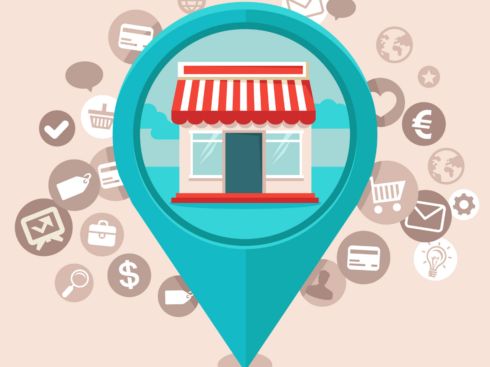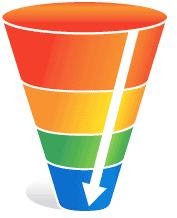
Its been 6 months since Acme Startup launched their product. Right noises were made in tech media. First set of users are onboard. Growth has been slow but steady. Now the tech founders have been advised by the mentors to find a dedicated resource for chasing growth. In comes the Growth Hacker — like a Special Ops professional airdropped for a new mission.
The Growth Hacker, mostly, lands with sketchy prior intel for his mission ahead. His first objective is to clear the fog of war. The terrain has to be mapped first before planning any mission. How quickly and systematically he orients himself will impact the odds of successful execution of mission.
Fog of war: A term used to describe the level of ambiguity in situational awareness experienced by participants in military operation
While this is stretching a metaphor too far, a Growth Hacker not part of the founding team, who is hired some time after launch of the product, is in a similar situation. He has to wrap his mind around the current state of user acquisition. This will inform him of problem areas. He will know where the low hanging fruits are and what requires deeper investigation.
Efficient collection of initial information calls for an organized approach. Here is a roundup of typical information, in sequential order, which the Growth Hacker will gather before planning his strategy to attack growth for the product.
[ Note:
- Below discussion assumes existence of historical product usage data from prior integration of typical traffic & user interaction tracking service like Google Analytics and MixPanel. If this is not in place, the Growth Hacker has to first implement relevant tracking. Only after some meaningful data is gathered can an improvisation in growth strategy be charted out.
- The discussion is relevant primarily for web-app (browser-based products) and not so much for mobile apps. How traffic is driven to a mobile app’s install page on a mobile app store and how to get users to install the mobile app requires a separate discussion]
Slice-n-Dice, then Rinse-n-Repeat
The first step is learning what brings people to the product’s website or app store listing. Digging deeper into “new visitors” traffic by segmenting on different dimensions reveals how people are primarily discovering the website.
How to interpret traffic distribution data?
- Understand the current importance of different segments within a dimension for reaching the target audience
- Compare against expected traffic distribution in segments based on qualitative assessment of the type of product (content based, data aggregator, social platform, marketplace, SaaS, gaming).
- Compare against estimated traffic distribution in segments of similar products or competitors (from sources such as SimilarWeb) to know how others are getting their traffic
- Assess if the implied context in which user discovers the product, as indicated by the traffic distribution, matches with the expected pattern.
Important dimensions for segmenting
- Traffic sources — Organic search [1], direct [2], social [3], other referrals [4], paid advertising [5] or other sources [6]
- Location — Prominent geographies (country / region / city) from where the product is being discovered. Is visitor interest fairly spread across the world or from a local geography only?
- Device (for a web-app) — Desktop, mobile or tablet. Prominence of desktop traffic (compared to that in overall internet traffic for a geography) indicates people visit the product in context of work or sustained attention. On the other hand, a more than usual mobile & tablet traffic to website indicates product’s discovery when visitor is on the move — away from the desk (like, in kitchen) or in location-specific context (like, finding nearby eating joints).
Citius, Altius, Fortius
“Startups” are defined to be chasing growth — an increasing rate of user acquisition. More users should join in current time period than they did in previous time period.
User acquisition = Traffic * Conversion Rate
Traffic and conversion rate are (largely) independent variables. Increasing either requires different tactics. Assume for now, conversion rate is stable. So, user acquisition is directly proportional to traffic.
Thus, the next step is to analyze traffic growth in segments under each dimension from previous section. Traffic Sources is the most important dimension to be looked at.
Questions to ask
- What are growth patterns in traffic from each source?
- Are the major traffic sources showing any steady growth / decline?
- Are there any spikes / dips in any source?
- Are reasons known for both steady growth / decline as well as spikes / dips in traffic from a source?
- Is there any cyclical pattern observable in traffic from any source and explainable cause for that?
Enter the Maze, Wherever You Wish From
A web-app is imagined to be like a tree — with a single entry point and branching options for navigation. In reality, it ends up being a maze, with multiple entry points.
The Growth Hacker must learn about all possible entry points into the maze (“landing pages” of the web-app). He needs to understand the layout of this maze too — navigation paths possibe in the app from the landing pages. It will also help to know the subdomains and components of URL structures.
He will also examine which landing pages offer further navigation without aSign Up wall — it effects how much can a new visitor experience about the web app without needing to register (i.e. give personal information).
Some probable landing pages:
- Home page — The page shown when people type the home URL.
- Product Tour page — Page(s) where product features, demo videos, user testimonials, FAQs, team etc. are listed
- Content pages —Like Amazon’s product pages or a magazines’s article page; can be reached from Google Search or shared links
- Company blog — Posts written for sharing knowledge in product’s domain or updates on product development
Choose Your Own Adventure

Getting people to visit the product’s website is a challenge. But making them do anything after their visit is no easier a task.
The existing Bounce Rate is a gauge of the likelihood of a new visitor engaging with the website. What the visitor sees on the landing page should encourage or interest them enough to seek out more [7]. The Growth Hacker will map out average Bounce Rate over a period of time for all categories of landing pages to understand if these are able to make any impact on a new visitor (i.e. get a low Bounce Rate).
The website can present one or many Call-to-Actions (like, Sign Up, View Demo, Start Chat with a customer representative) to a visitor on the landing page. The Growth Hacker will take stock of all the CTAs present on a landing page. These are the possible options for next action for the visitor.
Another form of Call-to-Action is navigation links to other pages of website (like, category listings, FAQ section, links to more pages with similar content). These allow visiting other pages in the website without needing the visitors to be signed in as a registered user. The Growth Hacker will check how visitors flow from landing page to other pages navigable and what CTAs are present on those other pages.
At the end of this exercise, the Growth Hacker will have fair idea of how new visitors experience the website.
They came, they saw & they didn’t leave
A CTA is the starting point of the process to convert a new visitor to a registered user. The Growth Hacker will assess how successful is the conversion process from each CTA.
First aim is to get maximum number of new visitors to interact with one of the CTAs present on the landing page. However, just presenting CTAs doesn’t mean that visitors are going to engage with these. The Growth Hacker will evaluate the factors which play their part at this stage:
- Number of CTAs — Too many CTAs confuse the user or may take away mindshare from the most important action desired from them
- Context-Purpose fit of CTA — A user reaching a landing page looking for some information by searching for a query on Google will not be inclined to click on Learn More to know about all the feature details of the product at that point of time
- Visual treatment of CTA — Whether the CTA is noticeable and is stylistically appealing to the visitor; the type of UI element, color, font, placement on page
- Message accompanying the CTAs (the “Copy”) — The text should be unambiguous in its meaning, catchy to draw attention and not be misleading about what follows next
- Intermediate steps in conversion process — A CTA may be starting of a chain of steps before successful conversion; each intermediate step should be consistent & logical in information flow and encourage the visitor to complete the process.
Beyond the Fog
For our Growth Hacker from the metaphor, that’s a lot of intelligence to gather and wrap his head around. This information prepares him to draw the next stage of battle plans — plug the obvious holes in conversion funnels, optimize landing pages, focus on important sources of traffic, plan for increasing footprint in lagging sources of traffic.
Ankit Jain is Growth & Monetization @ Cucumbertown | ex-Private Equity investor | Moved from ‘making investments’ to ‘growing investments’
































